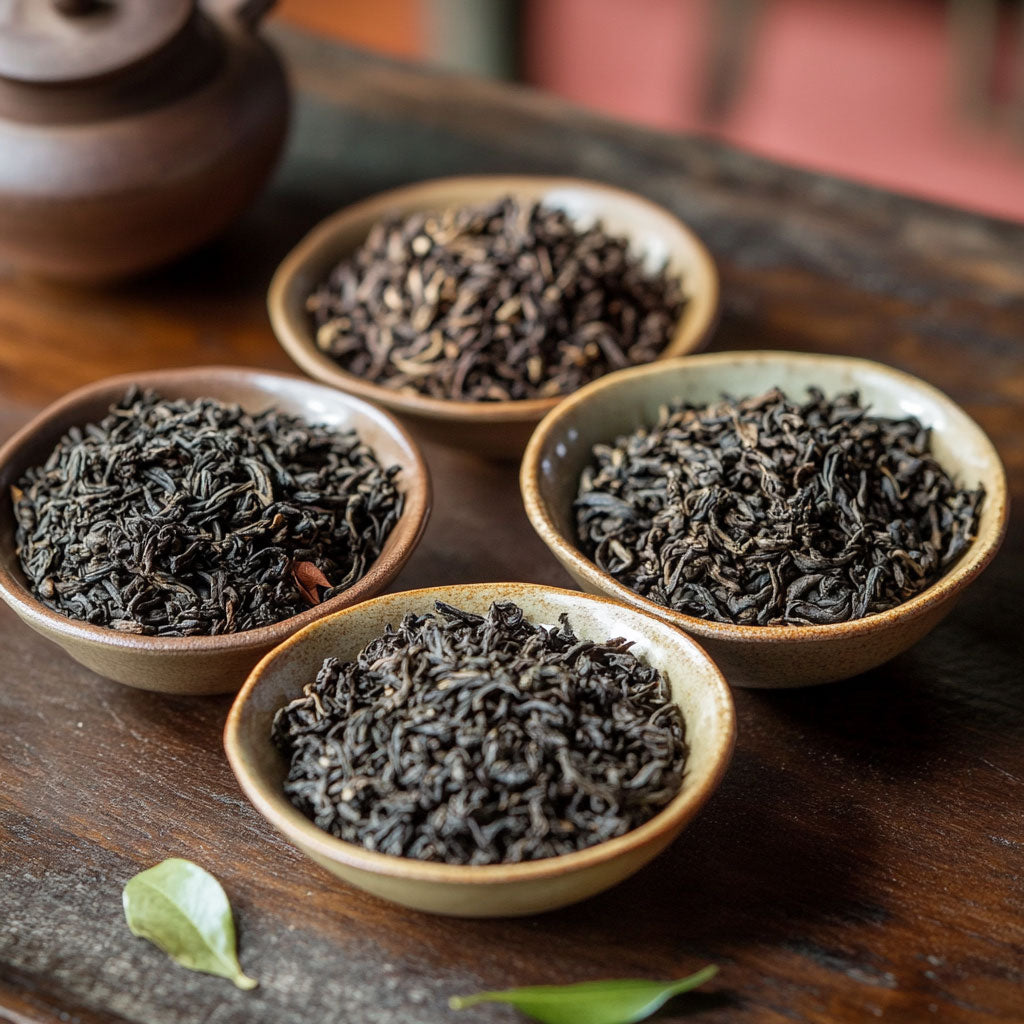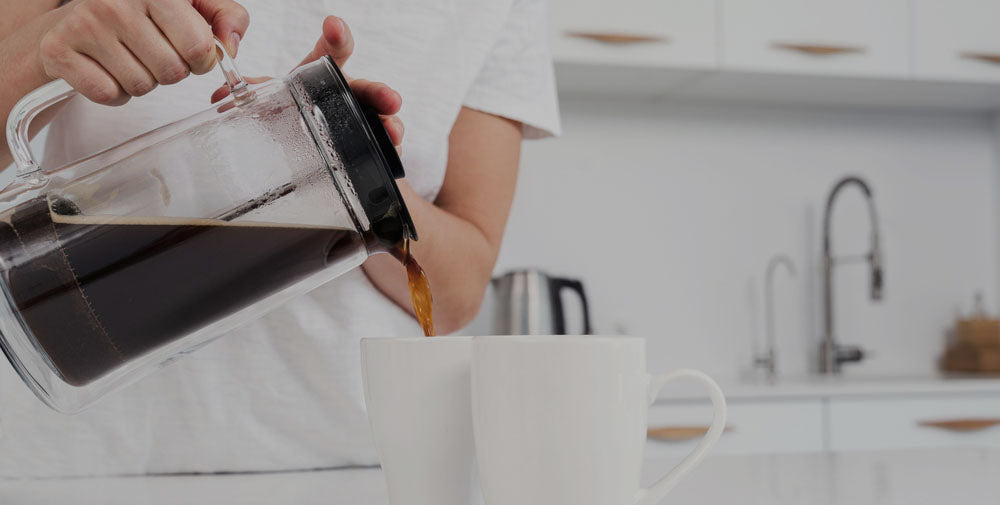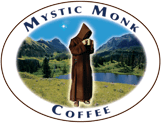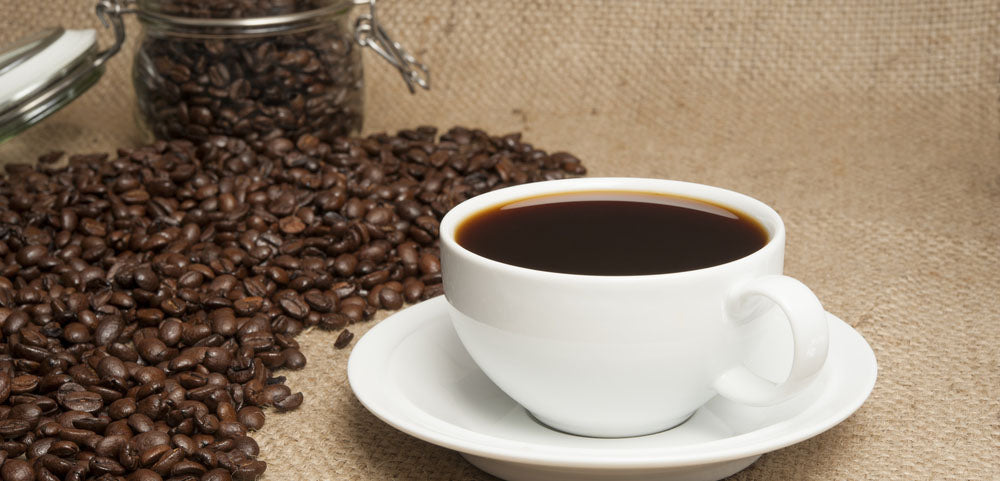If you’re like us, you treasure that morning cup for its rich flavor and energizing kick. But it can beg the question "how much caffeine in coffee?" It’s a common question for casual coffee drinkers and enthusiasts alike, but it's not the easiest to answer. Caffeine levels vary widely depending on the type of coffee you drink and how it’s prepared.
In this fun yet informative guide, we’ll explore the caffeine content in different coffee drinks. From your standard drip brew to bold espresso shots, instant coffee, smooth cold brew, and even decaf.
We’ll also compare coffee to other beverages like tea, soda, and energy drinks. So grab your favorite mug (filled with Mystic Monk Coffee, of course) and let’s dive in!
Caffeine 101: What Is It and How Much Is Safe?
Caffeine Content in Different Types of Coffee

Not all coffee is created equal when it comes to caffeine. The amount of caffeine can vary by brewing method, serving size, and bean type.
Here’s a breakdown of the most common coffee types and their typical caffeine content:
Drip Brewed Coffee (Filter Coffee)
Your standard brewed coffee from a drip machine or pour-over typically contains around 95–100 mg of caffeine per 8-ounce cup. The exact caffeine content can vary — a weaker brew might have ~70 mg while a strong brew could reach 140 mg in 8 oz.
If you’re brewing Mystic Monk Coffee at home, the caffeine in your cup will depend on how you brew it and how much coffee you use. But on average, it delivers just under 100 mg per 8-oz serving.
Fun fact: The type of roast doesn’t drastically change caffeine content. Many think dark roasts have more kick, but in reality, light roasts actually have slightly more caffeine than dark roasts per the same volume.
Espresso
Espresso is famous for its strong taste and concentrated nature. But what about its caffeine content? On average, a single 1-ounce shot of espresso has around 63 mg of caffeine.
Because espresso is served in such a small volume, it actually has less total caffeine than a full cup of drip coffee. The caffeine is just packed into a tiny, bold package!
However, remember that espresso is often the base for lattes, cappuccinos, and Americanos. If you get a double shot (doppio), that’s roughly 126 mg of caffeine (about the same as an 8-oz cup of drip).
So, is espresso “stronger” than coffee? Yes and no. Espresso has a high caffeine concentration, but a typical serving gives you less caffeine overall than a full cup of coffee. If you sip it slowly, you might feel a quick perk, but it won’t last as long as a large mug of drip coffee.
Instant Coffee
Instant coffee is known for its convenience. Just add hot water and you’ve got a cup of joe. But instant coffee usually contains a bit less caffeine than brewed coffee.
A standard 8-ounce cup has about 60–80 mg of caffeine. The lower end (around 60 mg) is common for many instant brands, whereas stronger instant formulas might be up to 80 mg.
Why the difference? Instant coffee is made from coffee that’s been brewed and then dehydrated into powder or crystals. Some caffeine is lost in that process, so you typically get a slightly milder buzz than fresh-brewed.
Cold Brew Coffee
Cold brew has taken the coffee world by storm in recent years, loved for its smooth, less acidic taste. But don’t be fooled by its mellow flavor — cold brew coffee can pack a hefty caffeine punch.
A 12-ounce glass of cold brew can range roughly from 150 to 200 mg of caffeine. Some cold brew concentrates are so strong they’re meant to be diluted with water or ice.
If you were to drink the concentrate straight, the caffeine could be extremely high. Even when diluted to normal strength, cold brew tends to be up there in caffeine content due to the prolonged brewing time (usually 12-24 hours) and higher coffee-to-water ratio used.
If you make cold brew with, say, 1.5 times more coffee grounds than you’d use for hot drip coffee (a common method), you’ll naturally get more caffeine in each cup.
So, if you need a serious pick-me-up, cold brew might be your go-to. Just sip wisely, because its smooth taste might have you gulping more caffeine than you realize!
(Psst – if you love cold brew, try making it with Mystic Monk Coffee beans. Our fresh, monk-roasted beans make an exceptionally flavorful cold brew.)
Decaf Coffee
Decaf coffee is the saintly option for when you want coffee without the caffeine buzz. But contrary to popular belief, decaf is not completely caffeine-free. In truth, decaffeinated coffee still contains about 2 to 5 mg per 8-ounce cup. That’s a fraction compared to regular coffee.
Decaffeination processes (like the Swiss Water Process used for Mystic Monk Coffee’s decaf) extract caffeine while preserving those delicious coffee flavors. If you’re caffeine-sensitive, even decaf’s tiny amount might have a mild effect.
However, for most people, decaf won’t cause jitters or sleepless nights. It’s a great evening drink or an option when you want a third cup of the day without overdoing the caffeine.
If you love the ritual of coffee but need to cut back on caffeine, give our Mystic Monk Coffee decaf blends a try. They’re water-processed and chemical-free, meaning you get a full-bodied coffee taste with almost no caffeine. For example, our Vespers Decaf dark roast has roughly 2 mg of caffeine per cup.
What Factors Affect Caffeine Levels in Coffee?
You might be wondering why one cup of coffee could have 80 mg of caffeine and another nearly 200 mg. Several factors can influence the caffeine content:
- Bean Type (Species): The type of coffee bean you use makes a big difference in caffeine content. There are two main species: Arabica and Robusta. Robusta beans contain about twice as much caffeine as Arabica beans. Mystic Monk Coffee uses high-quality Arabica beans for their superior flavor.
- Roast Level: As noted earlier, light roasts and dark roasts can have slight differences in caffeine. Lighter roasts are a bit denser and retain a bit more caffeine than darker roasts. However, the difference isn’t dramatic, so choose the roast you love for taste.
- Grinding and Brewing Method: How you brew your coffee affects caffeine extraction. Finer grinds and longer brew times extract more caffeine.
- Serving Size: This one’s straightforward — a bigger cup means more coffee, which means more caffeine. So when comparing caffeine, always factor in how much you’re drinking.
Keep these factors in mind to understand your caffeine intake. If you ever need to amp it up, you could try a coffee blend that includes some Robusta, a lighter roast, or simply have a larger serving.
If you want to dial it down, opt for Arabica beans (which we’ve got you covered), a smaller serving, or mix in some decaf beans to your grounds for a “half-caff” brew.
Explore our selection of fresh-roasted Mystic Monk Coffee beans and find the perfect roast for your taste and caffeine needs. We offer something for everyone, from vibrant light roasts to decaf options. Check out our fresh coffee collection and treat yourself. Your next great cup is just a click away!
Coffee vs. Other Drinks: How Does It Compare?

We’ve looked at how much caffeine is in various coffees, but how does coffee stack up against other popular caffeinated beverages like tea, soda, or energy drinks?
Coffee vs. Tea
Tea is the runner-up to coffee in the morning caffeine race. Black tea, the strongest type of true tea (from the Camellia sinensis plant), typically contains around 40–50 mg of caffeine per 8-oz cup. That’s roughly half the caffeine of a same-sized cup of brewed coffee. Green tea, however, usually has less—about 25–30 mg per 8 oz.
Some strong black teas or certain varieties like matcha (powdered green tea where you consume the whole leaf) can inch closer to coffee’s caffeine level. A robust Assam black tea or matcha prepared with a teaspoon of powder might deliver on the order of 38-176 mg of caffeine. Still, coffee usually wins the caffeine contest.
It’s also worth noting that herbal teas (like chamomile, peppermint, and rooibos) have zero caffeine since they’re not actually from the tea plant. And decaf tea has just trace amounts (~2 mg of caffeine).
At Mystic Monk Coffee, we offer a range of teas, from brisk black teas to soothing herbals. These are perfect for afternoons when you want a smaller caffeine boost or simply a calming brew.
Coffee vs. Soda
Many sodas (cola and otherwise) contain caffeine, but in much smaller doses than coffee. A standard 12-oz can of cola typically has around 35 mg of caffeine. Some other soda flavors that have added caffeine, like certain citrus sodas (Mountain Dew, Mello Yello), have a bit more, roughly 50–55 mg per 12 oz.
There are a few outlier sodas: a brand like Mountain Dew Rise (an energy drink masquerading as soda) or specialty colas can have more caffeine. Generally, soda is the lighter-weight in the caffeine arena.
So, if you’re looking for a caffeine lift, coffee is the clear winner over soda.
Coffee vs. Energy Drinks
Energy drinks are often favored by those who may not love coffee or need something cold and sweet. They do contain significant caffeine, but how do they compare to coffee?
A typical energy drink (think Red Bull, Monster, Rockstar, etc.) contains about 80 mg of caffeine per 8 oz. This is actually slightly less caffeine than an 8-oz cup of coffee (which is ~95 mg).
However, most energy drinks come in a 16-oz can, and those usually have around 150–160 mg of caffeine. Some newer energy drink brands pack even more caffeine — it’s not unheard of to see 300 mg in a 16-oz can of an “extreme” energy drink.
Then there are energy shots, like those tiny 2-oz bottles, which often contain 200 mg of caffeine or more in one shot. They tend to produce a quick, intense buzz.
One big difference: Energy drinks usually also contain other ingredients like taurine, B-vitamins, sugar or sweeteners, and herbal stimulants (guarana, ginseng, etc.).
Some of those ingredients might have their own mild effects or simply add to the marketing appeal. The sugar in many energy drinks can give you a rush and then a crash.
Coffee, on the other hand, is pretty straightforward — caffeine plus natural antioxidants, and you control any sugar or cream you add.
With Mystic Monk Coffee, you can choose a brew that suits your palate and caffeine needs. Our coffee subscription service even makes it easy to never run out of fresh coffee. You get premium fresh-roasted beans delivered to your door on your schedule.
Sip Smart and Enjoy!
Caffeine is a wonderful little compound that brings joy to our mornings and focus to our workdays. Knowing how much caffeine is in your coffee empowers you to make the best choice for your day, whether you need a big boost or just a gentle lift. The good news is you can adjust your caffeine intake easily. And if you need extra oomph, you can opt for a bold cold brew or an extra espresso shot.
Ready to energize your day? Visit our website to order your favorite Mystic Monk Coffee beans or grounds, and brew the perfect cup tailored to your caffeine needs. From regular brews to flavorful favorites and decaf, we’ve got you covered.
Read more

In the heart of Thailand’s tropical heat, a glass of Thai iced tea, or “cha yen,” offers a refreshing escape. This creamy, orange-hued beverage combines the robust flavors of strong black tea, arom...

Preparing coffee in a quiet kitchen just before sunrise is an almost sacred tradition. For those who’ve discovered the French press, that moment becomes a ritual you look forward to: the slow pour ...


